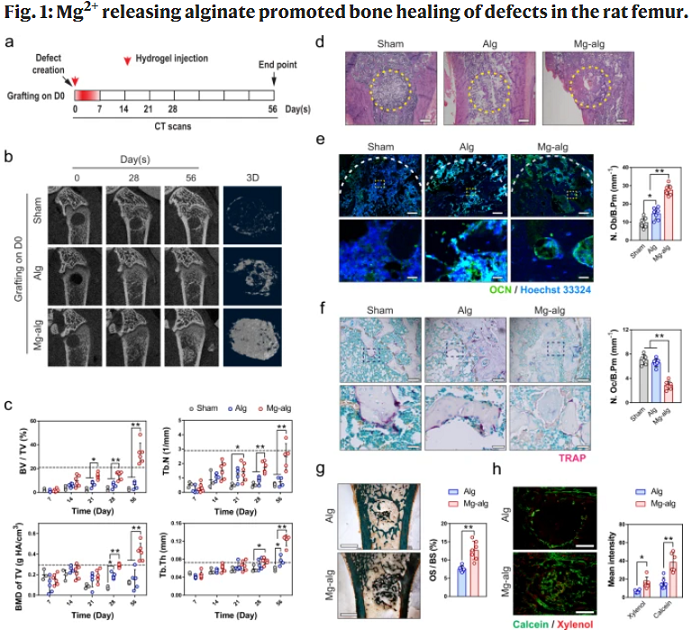
Published on Nature Communications (17 May 2021)
Author(s): Wei Qiao, Karen H. M. Wong, Jie Shen, Wenhao Wang, Jun Wu, Jinhua Li, Zhengjie Lin, Zetao Chen, Jukka P. Matinlinna, Yufeng Zheng, Shuilin Wu, Xuanyong Liu, Keng Po Lai, Zhuofan Chen, Yun Wah Lam*, Kenneth M. C. Cheung & Kelvin W. K. Yeung*
Abstract
Despite the widespread observations on the osteogenic effects of magnesium ion (Mg2+), the diverse roles of Mg2+ during bone healing have not been systematically dissected. Here, we reveal a previously unknown, biphasic mode of action of Mg2+ in bone repair. During the early inflammation phase, Mg2+ contributes to an upregulated expression of transient receptor potential cation channel member 7 (TRPM7), and a TRPM7-dependent influx of Mg2+ in the monocyte-macrophage lineage, resulting in the cleavage and nuclear accumulation of TRPM7-cleaved kinase fragments (M7CKs). This then triggers the phosphorylation of Histone H3 at serine 10, in a TRPM7-dependent manner at the promoters of inflammatory cytokines, leading to the formation of a pro-osteogenic immune microenvironment. In the later remodeling phase, however, the continued exposure of Mg2+ not only lead to the over-activation of NF-κB signaling in macrophages and increased number of osteoclastic-like cells but also decelerates bone maturation through the suppression of hydroxyapatite precipitation. Thus, the negative effects of Mg2+ on osteogenesis can override the initial pro-osteogenic benefits of Mg2+. Taken together, this study establishes a paradigm shift in the understanding of the diverse and multifaceted roles of Mg2+ in bone healing.


Read more: https://doi.org/10.1038/s41467-021-23005-2
